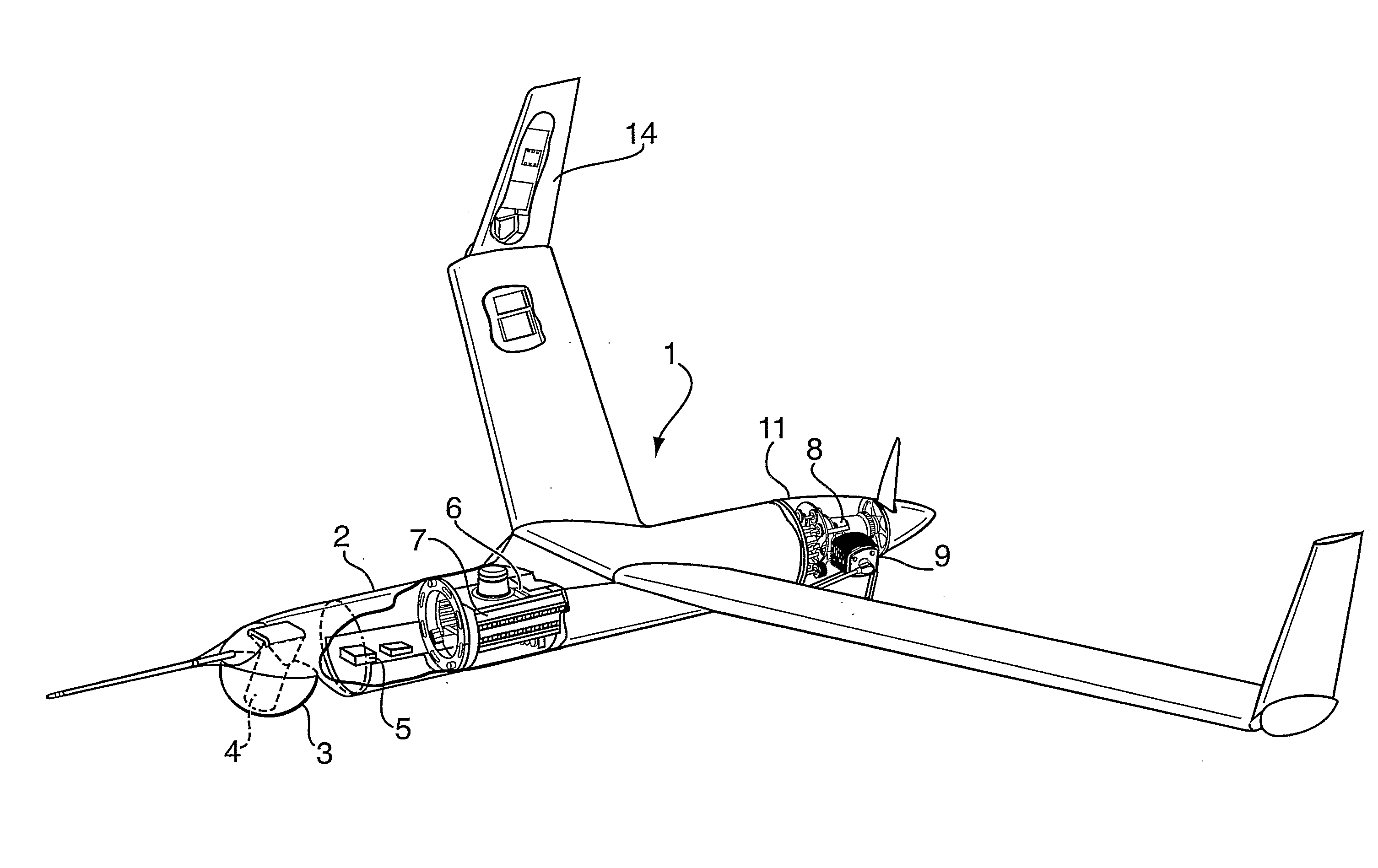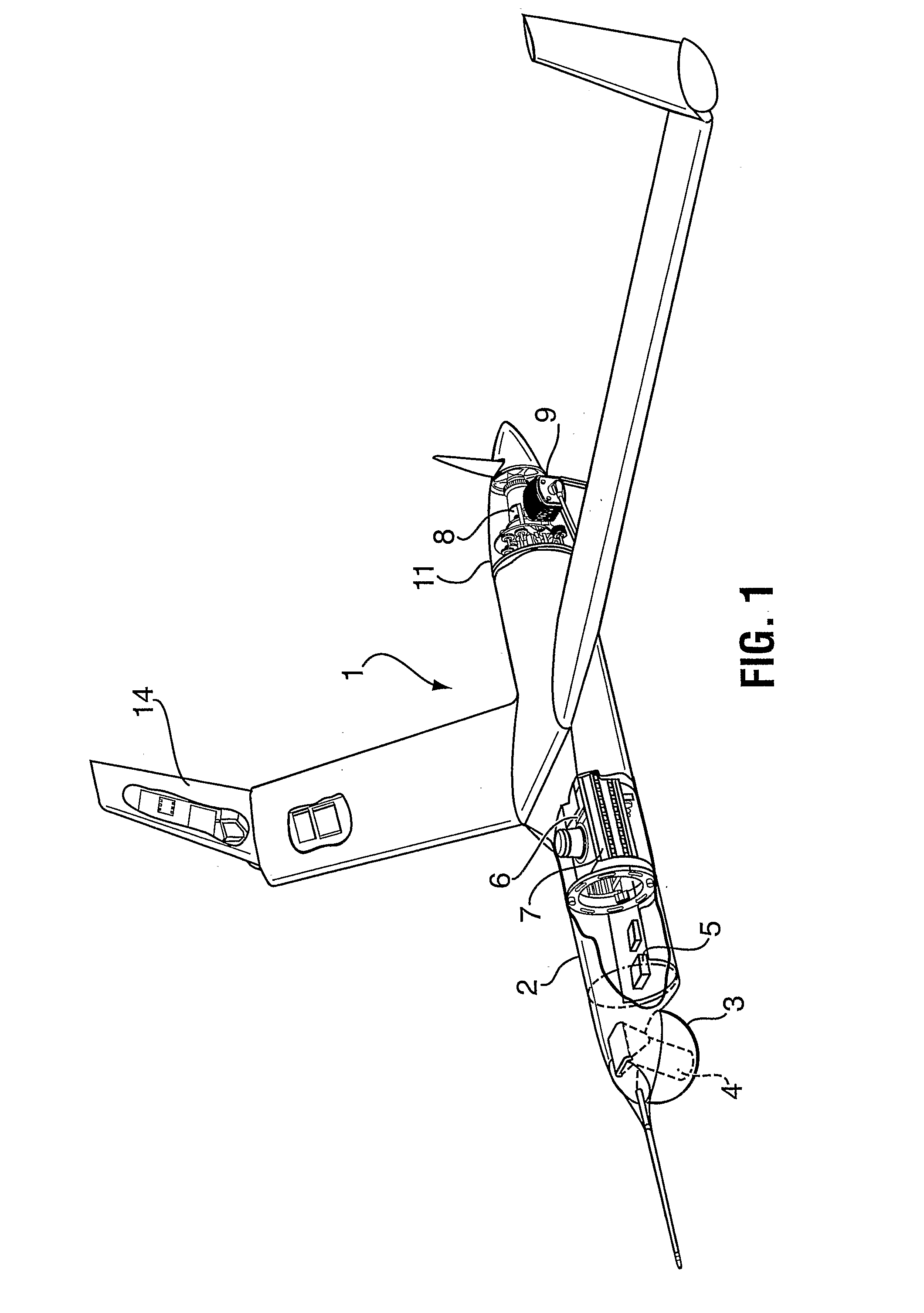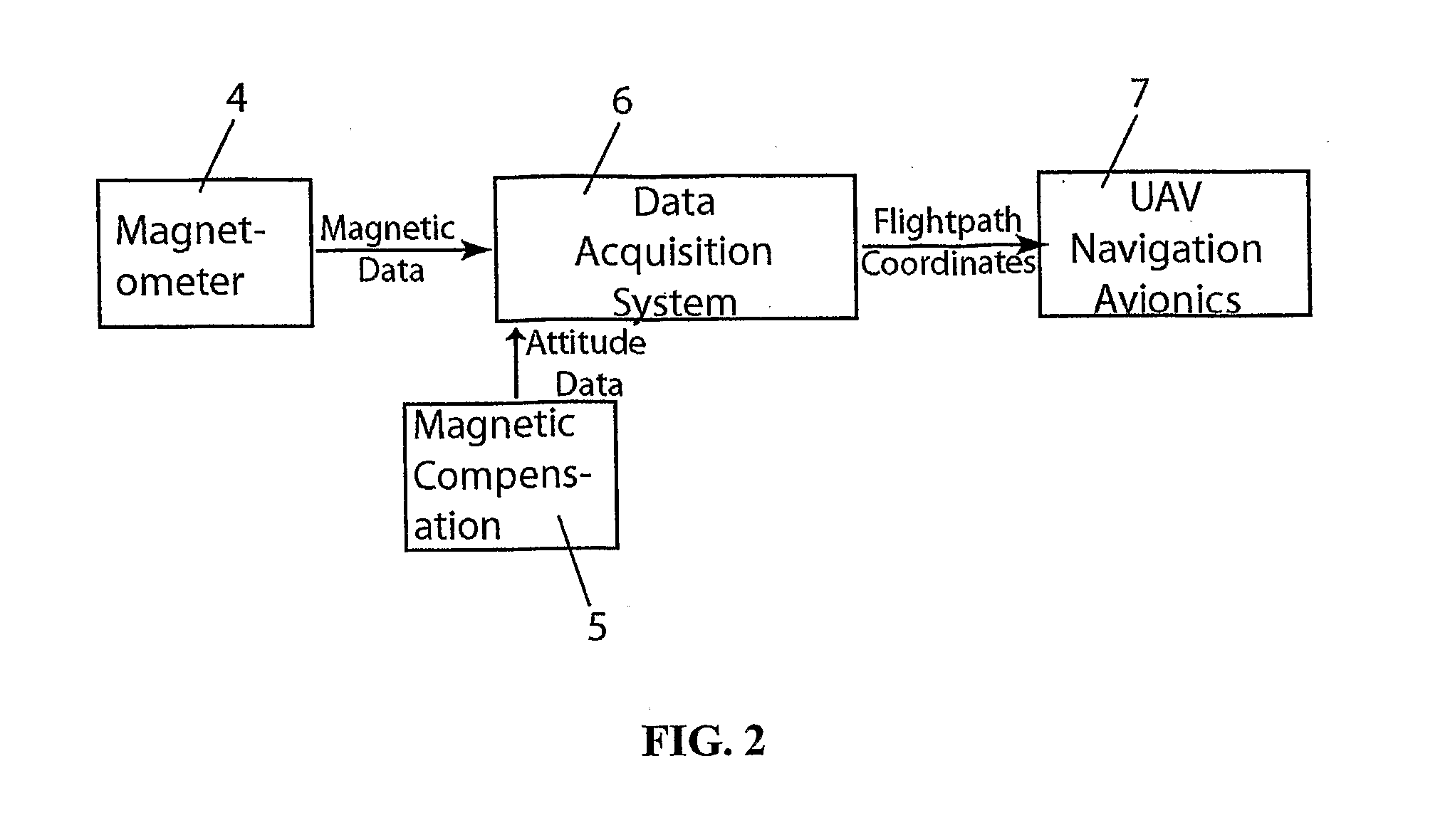Unmanned Airborne Vehicle For Geophysical Surveying
an aeromagnetic data and geophysical surveying technology, applied in the direction of navigation instruments, instruments, using reradiation, etc., can solve the problems of limiting the effective reach and range of such surveys, affecting the accuracy of geophysical surveys, so as to facilitate the mapping of remote areas, reduce costs, and eliminate the effect of flight personnel's risk
- Summary
- Abstract
- Description
- Claims
- Application Information
AI Technical Summary
Benefits of technology
Problems solved by technology
Method used
Image
Examples
Embodiment Construction
[0041]The invention will be described for the purposes of illustration only in connection with certain embodiments; however, it is to be understood that other objects and advantages of the present invention will be made apparent by the following description of the drawings according to the present invention. While a preferred embodiment is disclosed, this is not intended to be limiting. Rather, the general principles set forth herein are considered to be merely illustrative of the scope of the present invention and it is to be further understood that numerous changes may be made without straying from the scope of the present invention.
[0042]Throughout the description, only the UAV components pertinent to the present invention are discussed. However, it is understood that the UAV of the present invention includes all other components that are required for a UAV to be operational and that a person of ordinary skill in the relevant art would readily know how to select those according t...
PUM
 Login to View More
Login to View More Abstract
Description
Claims
Application Information
 Login to View More
Login to View More - R&D
- Intellectual Property
- Life Sciences
- Materials
- Tech Scout
- Unparalleled Data Quality
- Higher Quality Content
- 60% Fewer Hallucinations
Browse by: Latest US Patents, China's latest patents, Technical Efficacy Thesaurus, Application Domain, Technology Topic, Popular Technical Reports.
© 2025 PatSnap. All rights reserved.Legal|Privacy policy|Modern Slavery Act Transparency Statement|Sitemap|About US| Contact US: help@patsnap.com



